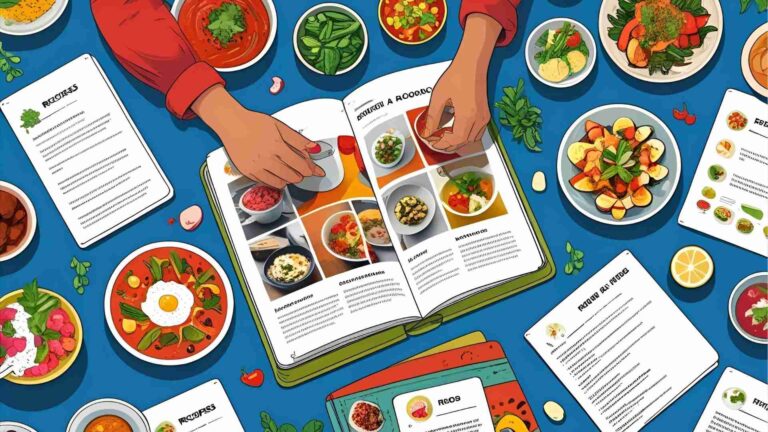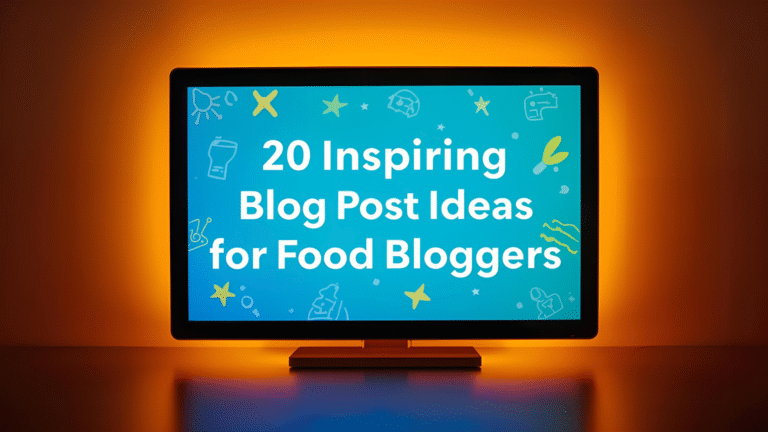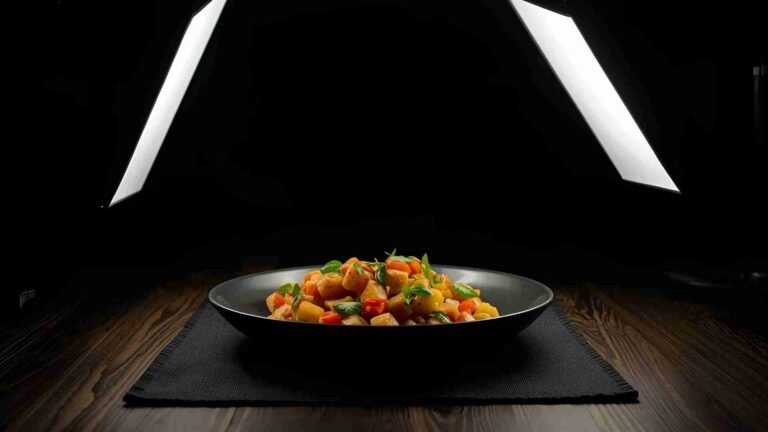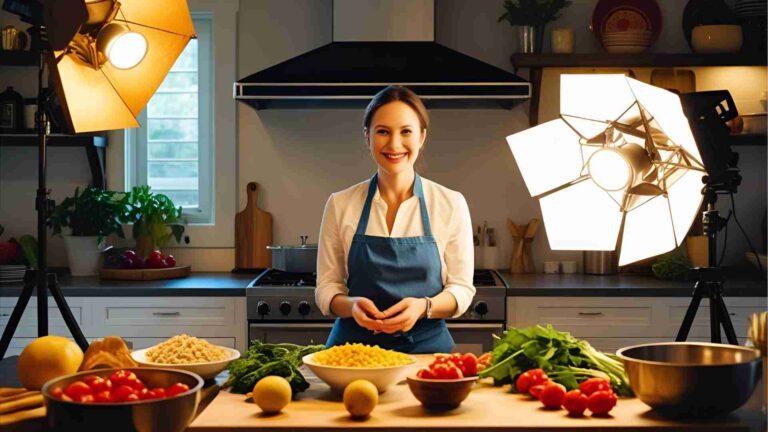7 Link Building Strategies for Food Blogs
Boost your food blog’s SEO with 7 proven link building strategies. Learn expert tips to earn quality backlinks and drive traffic in this comprehensive guide.
In the competitive world of food blogging, getting your recipes noticed requires more than just mouthwatering photos and clever writing. Search engine optimization (SEO) is critical, and at its core lies link building—the process of earning links from other websites to your blog. These backlinks act as votes of confidence, signaling to Google that your content is credible and relevant. For food blogs, where niche authority is key, quality backlinks from food-related sites can make or break your search rankings.
This comprehensive guide explores seven proven link building strategies tailored for food bloggers. From creating irresistible recipes to tapping into food communities, we’ll break down each tactic with actionable steps, tools, and examples. Whether you’re aiming for featured snippets or more organic traffic, these strategies will help you build a robust backlink profile and dominate search results.
Why Link Building Matters for Food Blogs
Link building isn’t just about SEO—it’s about establishing your food blog as an authority in a crowded niche. Here’s why it’s critical:
- Boosts Search Rankings: Backlinks from high-authority food websites tell Google your content is trustworthy, improving your chances of ranking on the first page.
- Drives Organic Traffic: Quality backlinks bring referral traffic from relevant audiences, like foodies searching for new recipes.
- Builds Niche Authority: Links from respected food sites position you as an expert, making your blog a go-to resource.
- Enhances Visibility: Backlinks increase your blog’s exposure, especially when featured in recipe roundups or media outlets.
Unlike other niches, food blogging relies heavily on visuals, seasonality, and community. A single link from a top-tier food site like The Kitchn (DA 84) can drive more value than dozens of low-quality links. As SEO expert Neil Patel notes, “If you want to rank on the first page of Google, you need to build backlinks from authority news sites and blogs.”
7 Proven Link Building Strategies for Food Blogs
1. Get Featured in Recipe Roundups
Why It Works: Recipe roundups are curated lists of recipes around a specific theme, like “20 Best Vegan Desserts” or “15 Cozy Fall Soups.” Getting featured in these collections earns you a backlink and exposes your blog to a targeted audience.
How to Do It:
- Craft Unique Recipes: Develop recipes with a twist—think unexpected ingredient pairings or solutions to common cooking problems. For example, a “Keto Pumpkin Spice Latte Cupcakes” recipe could stand out in a fall roundup.
- Submit to Roundup Curators: Target food blogs, magazines, and platforms like Tasty, Yummly, and Allrecipes that accept submissions. Check their guidelines and pitch your recipe with a catchy title, a brief description, and a high-quality photo.
- Leverage Seasonality: Align your recipes with seasonal trends—think cranberry dishes for Thanksgiving or refreshing cocktails for summer.
- Build Relationships: Engage with roundup curators by commenting on their posts or sharing their content on social media. This increases the likelihood of them featuring your recipes.
Example: Sarah from Keto Queen Blog reported a 50% traffic spike after being featured in a “30 Best Keto Desserts” roundup. Her unique keto tiramisu recipe, paired with stunning photos, caught the curator’s eye.
Pro Tip: Use tools like BuzzSumo to find popular roundup posts in your niche. Search for terms like “recipe roundup” or “best [cuisine] recipes” to identify opportunities.
Mermaid Chart: Recipe Roundup Workflow
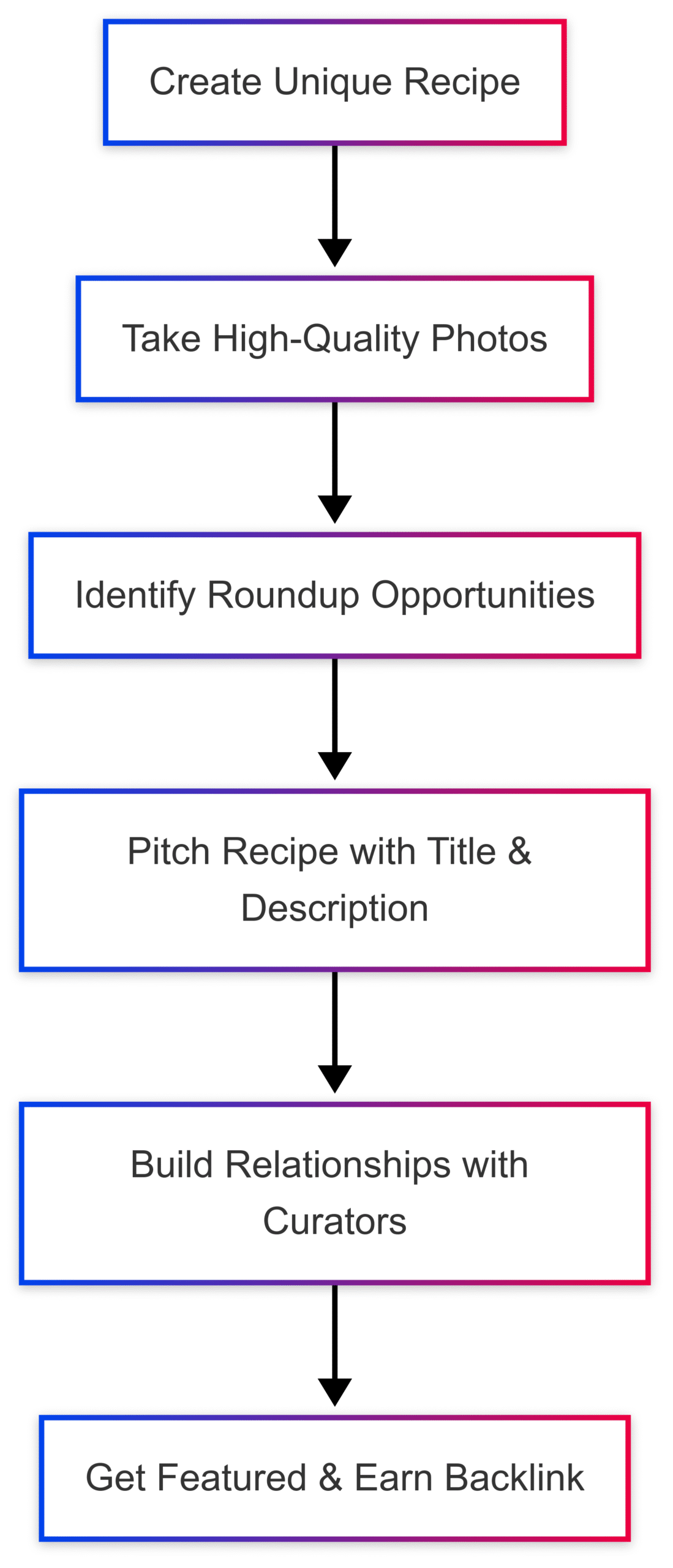
2. Leverage Food Photo Websites
Why It Works: Food photo websites like Foodgawker, Tastespotting, and Yummly showcase stunning food images, driving traffic and backlinks to your blog. These platforms have large audiences and signal quality to search engines.
How to Do It:
- Submit High-Quality Photos: Ensure your images are bright, sharp, and well-composed. Use natural light, avoid shadows, and follow the platform’s submission guidelines.
- Optimize for SEO: Use descriptive file names (e.g., “vegan-chocolate-cake.jpg”) and alt text to boost discoverability.
- Submit Regularly: Consistency is key. Submit to multiple platforms to maximize exposure, but prioritize those with high domain authority (e.g., Foodgawker, DA 64).
- Track Results: Monitor traffic from these platforms using Google Analytics to see which submissions drive the most clicks.
Example: A food blogger shared, “Over 10 months, I submitted 30 images to Foodgawker, with a 50% acceptance rate. Each accepted photo brought consistent referral traffic for months.”
Table: Top Food Photo Websites for Backlinks
| Platform | Domain Authority | Audience Reach | Submission Tips |
|---|---|---|---|
| Foodgawker | 64 | 134K FB fans | Bright, sharp images; daily picks |
| Tastespotting | 58 | 80K Pinterest | Patience for approval; high standards |
| Yummly | 70 | 289K FB fans | Auto-grabs new posts after approval |
Pro Tip: Use Canva or Photoshop to enhance your images before submission. Follow the “rule of thirds” for composition to make your photos pop.
3. Collaborate with Other Food Bloggers
Why It Works: Partnering with fellow food bloggers creates win-win opportunities for backlinks, traffic, and audience growth. Collaborations foster natural links through guest posts, roundups, or joint projects.
How to Do It:
- Guest Post Swaps: Find bloggers in complementary niches (e.g., vegan desserts and gluten-free mains) and offer to exchange guest posts. Include a bio link to your blog.
- Organize Recipe Roundups: Host a themed roundup (e.g., “10 Healthy Breakfast Ideas”) and invite other bloggers to contribute. Link to their recipes and ask them to link back to your roundup.
- Joint Projects: Co-create content like e-cookbooks, virtual cooking challenges, or podcast episodes. These projects attract links from food sites and media outlets.
- Engage Authentically: Comment on other blogs, share their content, and join food blogging groups on Facebook or LinkedIn to build relationships before pitching collaborations.
Example: Blog coach Margaret Bourne says, “When you help others, they will be more likely to help you too!” A roundup collaboration she organized drove thousands of visitors to her blog through cross-promotion.
Pro Tip: Use Brian Dean’s outreach template: “I wanted to see if you’d be interested in [partnership type]. [The benefit they’d get]. If interested, the next step would be [next step].”
4. Secure Press Coverage
Why It Works: Media coverage from food publications or local news outlets delivers high-authority backlinks and exposes your blog to new audiences. It also positions you as an expert in your niche.
How to Do It:
- Craft a Newsworthy Story: Pitch unique angles, like a trending food topic or a personal journey (e.g., reviving heirloom recipes). Ensure it aligns with the publication’s audience.
- Target Food Publications: Reach out to outlets like Eater, Bon Appétit, or local food magazines. Tailor your pitch to their style and highlight your expertise.
- Use HARO: Sign up for Help a Reporter Out (HARO) to respond to journalist queries. Provide concise, valuable insights and include your blog link.
- Attend Food Events: Participate in cooking competitions or festivals to network with journalists and earn mentions.
Example: Kim Kohatsu from Charles Ave Marketing landed features in Glamour and Social Media Today via HARO, boosting her blog’s credibility and backlinks.
Pro Tip: Follow up politely after a week if you don’t hear back. Persistence pays off, but avoid being pushy.
5. Join Food Blog Communities
Why It Works: Food blog communities like Food Bloggers Central or Mediavine are hubs for networking, collaboration, and link opportunities. Active participation builds trust and encourages natural backlinks.
How to Do It:
- Join Relevant Groups: Focus on platforms like Facebook’s Food Bloggers Central, Content Creators Corner, or Food Blogger Link Building groups.
- Share Expertise: Offer tips on cooking techniques or recipe development to establish authority. For example, share a hack for perfect risotto to spark engagement.
- Participate in Roundups: Contribute to community-organized recipe collections for backlinks and exposure.
- Collaborate on Projects: Team up with group members for e-cookbooks, challenges, or guest posts to earn links.
Example: A blogger credited Mediavine’s community for helping her go full-time, citing backlinks from group collaborations as a key factor.
Pro Tip: Be genuine—avoid spamming links. Build relationships by engaging with others’ content first.
6. Target Resource Pages
Why It Works: Resource pages are designed to link to valuable content, making them ideal for earning high-quality backlinks from food-related sites.
How to Do It:
- Find Resource Pages: Use Google search strings like “best food blogs + resources” or “cooking tips + inurl:resources” to identify relevant pages.
- Evaluate Quality: Check the site’s Domain Rating (DR) using Ahrefs or Moz. Aim for DR 30+ and ensure the page is relevant to your niche.
- Pitch Valuable Content: Create content like “The Ultimate Guide to Food Photography” or “Seasonal Ingredient Hacks” and pitch it as a resource page addition.
- Follow Up: Send one polite follow-up email if you don’t hear back after a week.
Example: Christopher from Snappa notes, “Resource page link building is a fantastic way to build quality backlinks to your website or content.”
Mermaid Chart: Resource Page Link Building Process
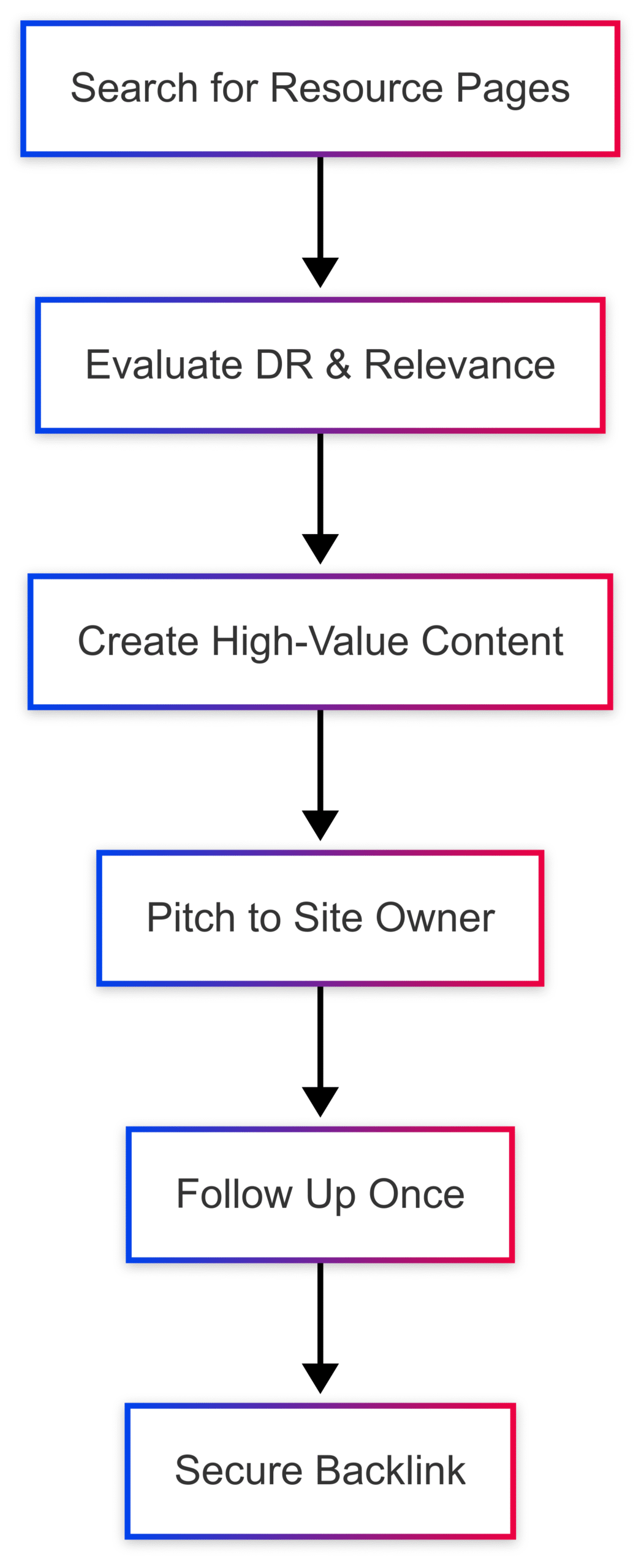
7. Fix Broken Links
Why It Works: Broken link building helps site owners fix dead links while earning you a backlink. It’s a low-effort, high-reward strategy for food blogs.
How to Do It:
- Find Broken Links: Use tools like Ahrefs’ Broken Link Checker or the “Check My Links” Chrome extension to identify dead links on food sites.
- Create Replacement Content: Develop content that matches or improves on the broken link’s topic (e.g., a new recipe for a dead link to “gluten-free brownies”).
- Pitch Site Owners: Email the webmaster, point out the broken link, and suggest your content as a replacement.
- Target Resource Pages: Focus on food-related resource pages, which often have multiple external links and higher chances of broken ones.
Example: Sam, a digital marketer, says, “You’ll get roughly 5 to 10 links for every 100 emails you send.” Targeting 20 broken links could yield one or two quality backlinks.
Pro Tip: Personalize your outreach emails to increase response rates. Mention the site’s value to show you’ve done your homework.
Creating Link-Worthy Content
High-quality backlinks start with content that others want to link to. For food blogs, this means recipes, guides, and visuals that stand out. Here’s how to make your content irresistible:
Writing Link-Worthy Recipes
- Uniqueness: Combine unexpected ingredients (e.g., lavender-infused brownies) or reinvent classics (e.g., vegan carbonara).
- Problem-Solving: Address dietary needs (e.g., gluten-free, low-carb) or cooking challenges (e.g., quick weeknight meals).
- Storytelling: Share the inspiration behind your recipe to make it relatable and shareable. Alison Roman’s viral #TheCookies recipe gained thousands of backlinks due to its compelling story and unique flavor.
Using Recipe Schema Markup
Recipe schema markup enhances search visibility by enabling rich snippets, like star ratings and cooking times, in search results. Benefits include:
- Increased click-through rates
- Better user experience
- Higher organic traffic
How to Implement:
- Follow Google’s Recipe Schema Guidelines.
- Use plugins like Schema Pro for WordPress.
- Test your markup with Google’s Rich Results Test.
Tool: Recipe Kit
- Features: Automatic schema generation, customizable recipe cards, Shopify integration.
- Benefits: Saves time on SEO and creates shoppable recipes for monetization.
Mastering Food Photography
Great photos are link magnets. Follow these tips:
- Use Natural Light: Shoot near windows to avoid harsh shadows.
- Focus on Composition: Apply the rule of thirds and use small plates for visual appeal.
- Style Thoughtfully: Highlight fresh ingredients to make dishes pop.
Cookie and Kate advises, “It’s all about the light! Become aware of how light hits the food.”
Tracking and Managing Your Backlinks
Monitoring your backlink profile ensures you’re building quality links and avoiding SEO pitfalls. Here’s how to stay on top of your link game:
Backlink Tools
| Tool | Main Feature | Cost | Best For |
|---|---|---|---|
| Semrush | Full backlink analysis | $129.95/month | All-around link management |
| Ahrefs | Large link database | $83/month (yearly) | Competitor research |
| SE Ranking | Affordable monitoring | $23.52/month | Budget-conscious bloggers |
Example: Sarah from Keto Queen used Semrush to discover 50 new backlinks, boosting her link building strategy.
Checking Competitor Links
- Use Ahrefs’ “Link Intersect” to find sites linking to competitors but not you.
- Analyze their link sources for new opportunities (e.g., recipe roundups or resource pages).
Removing Toxic Backlinks
- Conduct a backlink audit with tools like cognitiveSEO.
- Identify links from spammy or irrelevant sites.
- Request removal from webmasters or use Google’s Disavow Tool as a last resort.
Example: A food blog removed 316 low-quality backlinks, resulting in a 22% traffic increase in two months.
Future-Proofing Your Link Building Strategy
SEO is ever-evolving, and food bloggers must adapt to stay competitive. Here are key trends and long-term strategies to keep your blog thriving:
Emerging SEO Trends
| Trend | Impact | Action |
|---|---|---|
| Voice Search | 8.4 billion assistants expected | Use long-tail, conversational keywords |
| AI-Powered SEO | Enhances content creation | Leverage AI tools for keyword research |
| E-E-A-T Focus | Prioritizes expertise and trust | Showcase culinary expertise |
Google’s March 2024 update emphasized link quality over quantity, making relationships with authoritative food sites critical.
Long-Term Link Building
- Partner with Brands: Collaborate with ingredient or kitchenware brands for sponsored recipes with backlinks.
- Engage in Communities: Share knowledge in food forums to earn natural links.
- Guest Post Regularly: Write for high-authority food blogs to build credibility and backlinks.
Jyoti Ray from WPMyWeb.com advises, “Ditch black hat SEO tricks, beef up site security, and focus on killer content to avoid penalties and climb rankings.”
Avoiding Common SEO Pitfalls
- Keyword Stuffing: Write naturally, like a cook sharing a recipe.
- Mobile Optimization: Ensure your site is mobile-friendly, as most recipe searches happen on phones.
- Site Speed: Optimize images and use caching to improve load times.
- Regular Audits: Use Google Search Console to monitor and fix SEO issues.
Affiliate Links: A Bonus Link Building Strategy
Affiliate links can complement your link building efforts by driving revenue and encouraging partnerships. Here’s how to integrate them effectively:
- Equipment/Ingredient Reviews: Write detailed reviews of products you love, including affiliate links. Example: A 1,000-word review of a stand mixer with links to Amazon.
- Resource Pages: Create a “Recommended Tools” page with affiliate links to kitchen gadgets or ingredients.
- Recipe Headnotes: Add links to unique tools or ingredients used in your recipes (e.g., “I use this [cherry pitter – link] for quick prep”).
- Holiday Guides: Publish gift guides like “10 Gifts for Home Chefs” with affiliate links to products.
Tips:
- Disclose affiliate links clearly to build trust and comply with regulations.
- Stay within your niche to maintain relevance.
- Prioritize reader value to avoid appearing salesy.
Example: A blogger increased affiliate income from $200 to $1,000/month by strategically placing links in reviews and resource pages.
Measuring Success and Setting Goals
Track these metrics to gauge your link building progress:
- Referring Domains: Aim for a 10% increase quarterly.
- Domain Authority: Target links from sites with DA 50+.
- Link Relevance: Prioritize food-related sites.
- Traffic Growth: Monitor referral traffic from backlinks via Google Analytics.
Goals:
- Secure 5 high-quality backlinks (DA 50+) per month.
- Improve your blog’s DA by 2-3 points every six months.
- Increase organic traffic by 20% within a year.
Conclusion
Link building is a game-changer for food bloggers aiming to boost their SEO and grow their audience. By focusing on quality over quantity, creating shareable content, and building relationships with food communities, you can earn backlinks that drive traffic and authority. The seven strategies outlined—recipe roundups, food photo websites, blogger collaborations, press coverage, community engagement, resource pages, and broken link building—offer a roadmap to success.
Take inspiration from success stories like 100 Days of Real Food, which saw a 1,198% traffic increase through strategic SEO and link building. As Vince Nero from BuzzStream says, “The perfect link building strategy is a tactical mix of content-led digital PR and passive link building.” Combine proactive outreach with irresistible content, and your food blog will thrive in the competitive digital landscape.
Start implementing these strategies today, track your progress with tools like Semrush or Ahrefs, and stay adaptable to SEO trends. With persistence and creativity, your food blog can climb Google’s rankings and become a go-to resource for foodies everywhere.
FAQs
How do beginners get backlinks for food blogs?
- Act as an Expert: Respond to HARO queries to earn media mentions.
- Create Stellar Content: Develop unique recipes or guides that outshine existing content.
- Engage in Communities: Join food blogging groups to network and earn natural links.
- Target Resource Pages: Pitch your content to food-related resource pages.
Best websites for food blog backlinks?
- The Kitchn (DA 84): Accepts guest posts on kitchen tips and recipes.
- Eat Drink Better (DA 53): Focuses on sustainable food content.
- Foodgawker (DA 64): Ideal for photo-driven backlinks.
- Yummly (DA 70): Great for recipe submissions with high visibility.
By focusing on these strategies and consistently creating high-value content, your food blog can build a strong backlink profile and dominate search rankings.
Please share these 7 Link Building Strategies for Food Blogs with your friends and do a comment below about your feedback.
We will meet you on next article.
Until you can read, Are Recipes and Cookbooks Protected by Copyright

